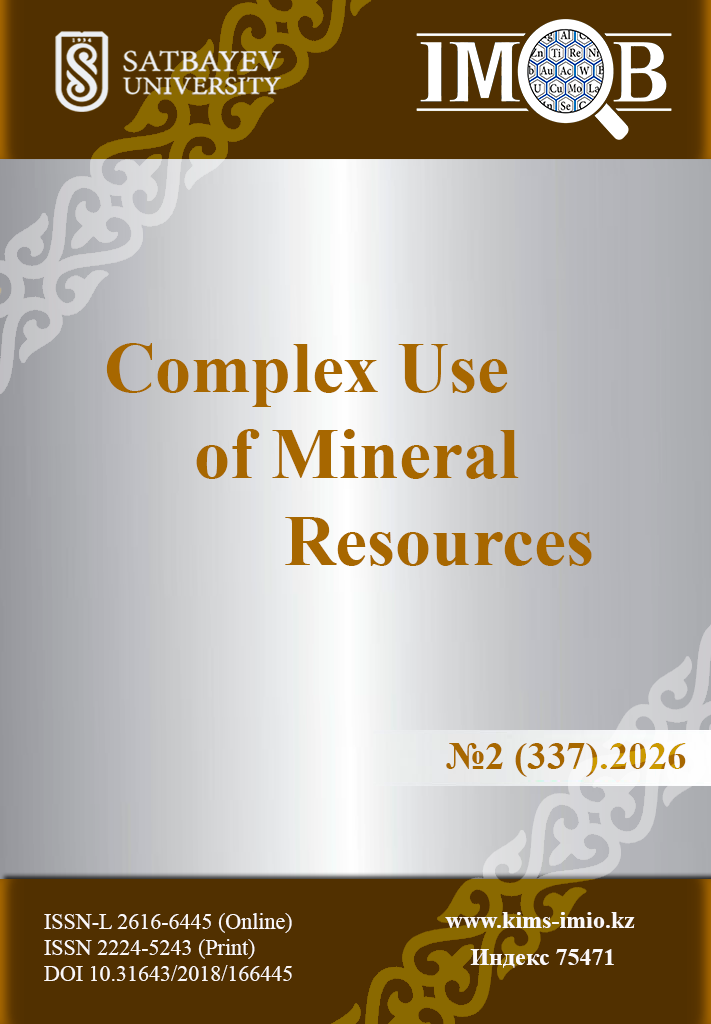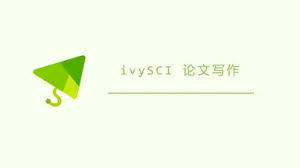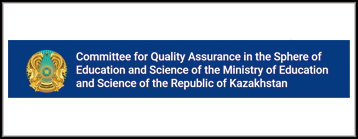Using ion modification methods for targeted change of strength properties of near-surface layers of composite ceramics
DOI:
https://doi.org/10.31643/2026/6445.14Keywords:
hardening, ion modification, hardness and wear resistance enhancement, ZrO2 – Al2O3 ceramics, low-energy ions.Abstract
The use of ionic modification methods is one of the promising methods of directed change of strength properties of near-surface layers of materials along with such methods as magnetron sputtering and mechanically induced deformation. Interest in this area of research is primarily due to the possibility of enhanced resistance of materials to external mechanical and thermal influences, as well as improved wear resistance of refractory ceramics, which have great prospects in industrial use and metallurgy and reactor building. This paper presents the assessment results of the possibility of using the ion modification method by irradiating the near-surface layer of ZrO2 – Al2O3 ceramics with low-energy Kr15+ and Xe22+ ions with energies of 300 and 440 keV to create a radiation-modified layer in the surface layer that is highly resistant to external influences. During the studies, it was found that irradiation with fluences of 1014 - 5×1014 ion/cm2 for Xe22+ ions and 1015 ion/cm2 for Kr15+ ions are optimal conditions for modifying the surface layer, as a result of which growth in wear resistance by 2.0 – 2.5 times and hardening by more than 15 – 20 % is observed compared to non-irradiated ceramics.
Downloads
References
Meetham Geoffrey W, and Marcel H. Van de Voorde. Materials for high temperature engineering applications. Springer Science & Business Media. 2000.
Raghavan Valayamghat. Physical metallurgy: principles and practice. PHI Learning Pvt. Ltd. 2015.
Yvon P, and Carré F. Structural materials challenges for advanced reactor systems. Journal of nuclear materials. 2009; 385(2):217-222.
Sequeira César AC. High temperature corrosion: fundamentals and engineering. John Wiley & Sons. 2019.
Kruzhanov VS. Modern Manufacturing of Powder-Metallurgical Products with High Density and Performance by Press–Sinter Technology. Powder Metallurgy and Metal Ceramics. 2018; 57(7):431-446.
Arif Zia Ullah, et al. A review on laser cladding of high-entropy alloys, their recent trends and potential applications. Journal of Manufacturing Processes. 2021; 68:225-273.
Liu Guo, et al. Additive manufacturing of structural materials. Materials Science and Engineering: R: Reports. 2021; 145: 100596.
Grigoriev Sergey N, et al. Electrical discharge machining of oxide and nitride ceramics: A review. Materials & Design. 2021; 209:109965.
Atabaki M Mazar. Recent progress in joining of ceramic powder metallurgy products to metals. Metalurgija-J. Metallurgy (MJoM). 2010; 16(4):255-268.
Davydchuk NK, et al. Synthesis and Consolidation of Composite Materials in the SiC–Si3N4–Si2N2O System. Powder Metallurgy and Metal Ceramics. 2024, 1-10.
Altenberger I, et al. Cyclic deformation and near surface microstructures of shot peened or deep rolled austenitic stainless steel AISI 304. Materials Science and Engineering: A. 1999; 264(1-2):1-16.
Zdorovets M V, Moldabayeva G Z, Zhumatayeva I Z, Borgekov D B, Shakirzyanov R I, & Kozlovskiy A L. Study of the Effect of Adding Nb2O5 on Calcium Titanate-Based Ferroelectric Ceramics. ChemEngineering. 2023; 7(6):103.
Martin U, et al. Cyclic deformation and near surface microstructures of normalized shot peened steel SAE 1045." Materials Science and Engineering: A. 1998; 246(1-2):69-80.
Hardell Jens, et al. Effect of oxide layers and near surface transformations on friction and wear during tool steel and boron steel interaction at high temperatures. Wear. 2015; 330:223-229.
Padilla II, Henry A, et al. Frictional performance and near-surface evolution of nanocrystalline Ni–Fe as governed by contact stress and sliding velocity. Wear. 2013; 297(1-2):860-871.
Mordyuk B N, et al. Characterization of ultrasonically peened and laser-shock peened surface layers of AISI 321 stainless steel. Surface and coatings technology. 2008; 202(19):4875-4883.
Moldabayeva G Z, Kozlovskiy А L, Kuldeyev E I, Syzdykov А K, & Buktukov N S. Efficiency of using Nitride and Oxy-Nitride Coatings for Protection Against High-Temperature Oxidation and Embrittlement of the Surface Layer of Steel Structures. ES Materials & Manufacturing. 2024; 24:1129.
Galyautdinov R T, Kashapov N F, and Luchkin G S. Formation of protective coatings for aluminium mirrors by magnetron sputtering. Welding international. 2003; 17(8):655-658.
Bräuer G, et al. Magnetron sputtering–Milestones of 30 years. Vacuum. 2010; 84(12):1354-1359.
Wendler B, et al. New type AlMo-, AlTi-or Si-based magnetron sputtered protective coatings on metallic substrates. Journal of Materials Processing Technology. 2006; 175(1-3):427-432.
Jain I P, and Garima Agarwal. Ion beam induced surface and interface engineering." Surface Science Reports. 2011; 66(3-4):77-172.
Ryabchikov Alexander I. High-Intensity Implantation With an Ion Beam’s Energy Impact on Materials. IEEE Transactions on Plasma Science. 2021; 49(9):2529-2534.
Krasnikov Vasiliy S, and Alexander E Mayer. Numerical investigation of the change of dislocation density and microhardness in surface layer of iron targets under the high power ion-and electron-beam treatment. Surface and Coatings Technology. 2012; 212:79-87.
Moldabayeva G Z, Kozlovskiy A L, Kuldeyev E I, Syzdykov AK, & Bakesheva A. Study of the Effectiveness of Corrosion Resistance Growth by Application of Layered AlN–TiO2 Coatings. Coatings. 2024; 14(4):373.
Bogomolova L D, et al. Study of near surface layer of graphite produced by nitrogen ion bombardment at high doses. Radiation effects and defects in solids. 2002; 157(5):493-508.
Zhang Yanwen, and William J. Weber. Ion irradiation and modification: The role of coupled electronic and nuclear energy dissipation and subsequent nonequilibrium processes in materials. Applied Physics Reviews. 2020; 7(4).
Zagyva Tamás, et al. In situ TEM study of heavy-ion irradiation-induced amorphisation and electron beam-induced recrystallisation in powellite (CaMoO4). Acta Materialia. 2023, 119391.
Ghorbani-Asl Mahdi, Silvan Kretschmer, and Arkady V Krasheninnikov. Two-dimensional materials under ion irradiation: from defect production to structure and property engineering. Defects in Two-Dimensional Materials. Elsevier. 2022, 259-301.
Nordlund Kai, et al. Primary radiation damage: A review of current understanding and models. Journal of Nuclear Materials. 2018; 512:450-479.
Ovchinnikov V V. Nanoscale dynamic and long-range effects under cascade-forming irradiation. Surface and Coatings Technology. 2018; 355:65-83.
Pulgarín Heidy L Calambás, and María P Albano. Sintering and microstrusture of al2o3 and al2o3-zro2 ceramics. Procedia Materials Science. 2015; 8:180-189.
Egeland G W, Valdez J A, Maloy S A, McClellan K J, Sickafus K E, & Bond G M. Heavy-ion irradiation defect accumulation in ZrN characterized by TEM, GIXRD, nanoindentation, and helium desorption. Journal of nuclear materials. 2013; 435(1-3):77-87.
Hwang Chii-Shyang, and Shuenn-Ching Tsaur. Effect of calcination on characteristics and sintering behaviour of Al2 3-ZrO2 composite powders. Journal of materials science. 1992; 27:6791-6796.
Li Nan, et al. He ion irradiation damage in Fe/W nanolayer films. Journal of Nuclear Materials. 2009; 389(2):233-238.
Zhang Xinghang, et al. Radiation damage in nanostructured materials. Progress in Materials Science. 2018; 96:217-321.
Fernández-Caballero A, et al. High-dose ion irradiation damage in Fe28Ni28Mn26Cr18 characterised by TEM and depth-sensing nanoindentation. Nuclear Materials and Energy. 2021; 28:101028.
Kumakhov Muradin Abubekirovich, and Fadeĭ Fadeevich Komarov. Energy loss and ion ranges in solids. CRC Press. 1981.
Chelyadinskii Aleksei R, and Fadei F Komarov. Defect-impurity engineering in implanted silicon. Physics-Uspekhi. 2003; 46(8):789.
Wang Renda, et al. Effect of low-dose Xe20+ ion irradiation on the deformation behavior of the magnetron sputtered Cr coatings under nanoindentation. Surface and Coatings Technology. 2021; 428:127907.
Wang Jing, et al. Modification of SRIM-calculated dose and injected ion profiles due to sputtering, injected ion buildup and void swelling. Nuclear Instruments and Methods in Physics Research Section B: Beam Interactions with Materials and Atoms. 2016; 387:20-28.
Downloads
Published
How to Cite
Issue
Section
License
Copyright (c) 2025 D.B. Borgekov, A.L. Kozlovskiy, D.I. Shlimas, R.I. Shakirziyanov, A.I. Popov, M. Konuhova

This work is licensed under a Creative Commons Attribution 4.0 International License.


























